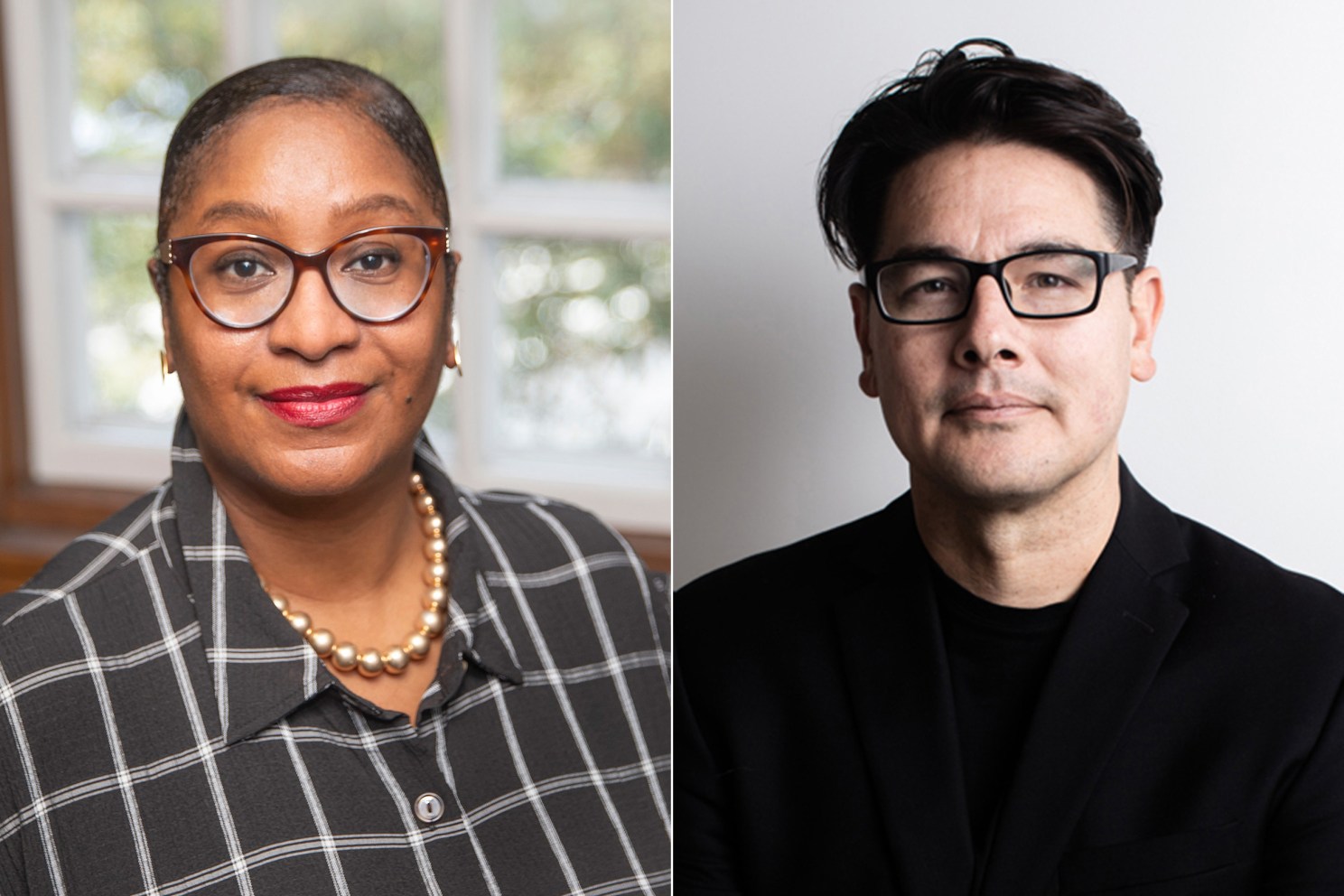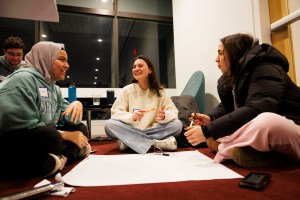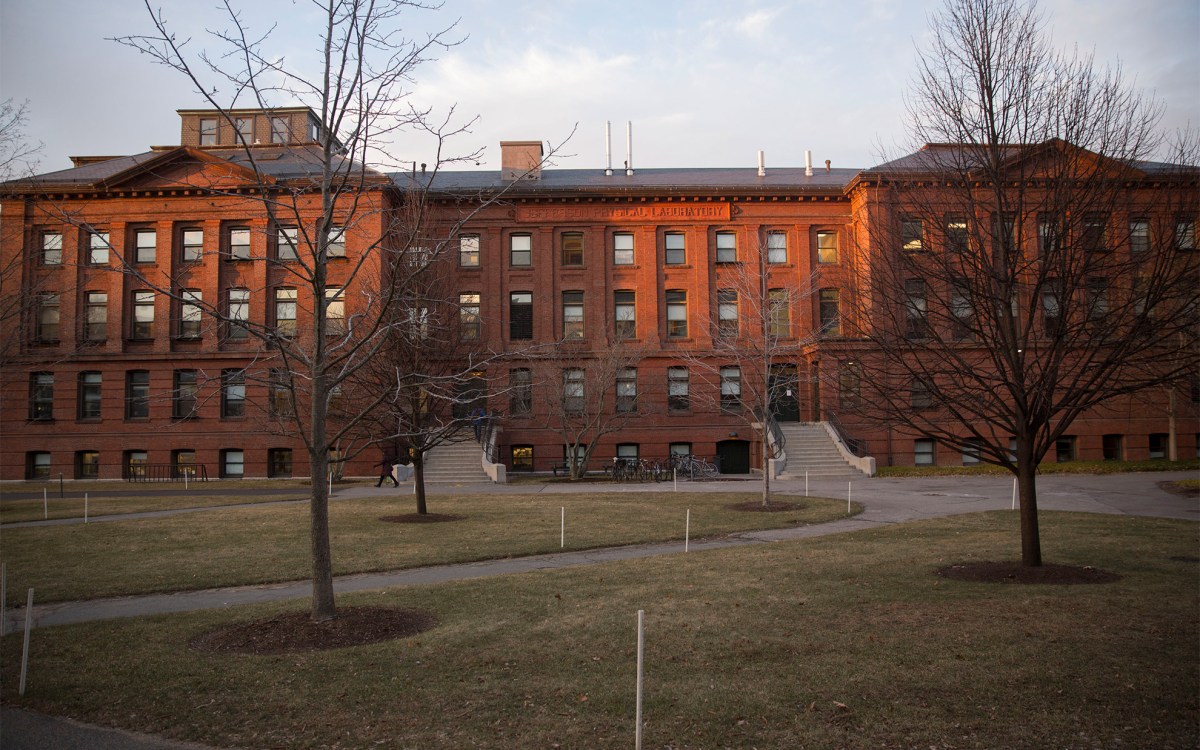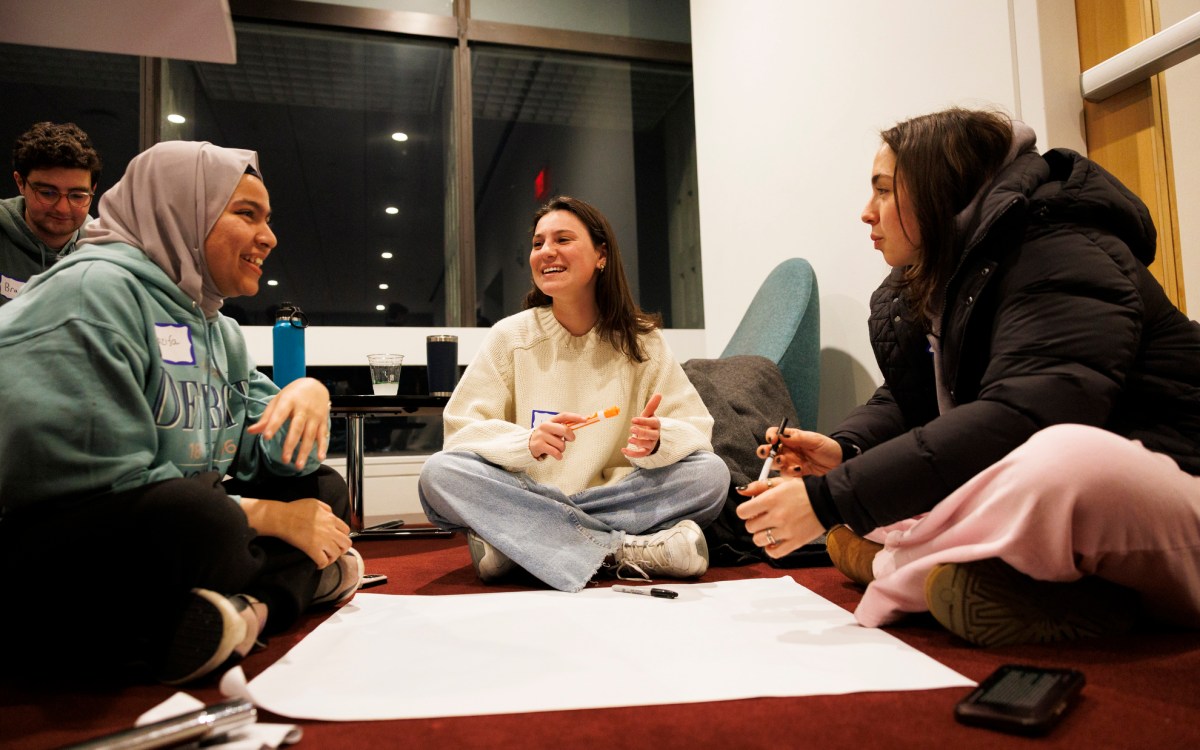
Memorial co-chairs Brenda Tindal and Eric Höweler.
Photo by Kris Snibbe, courtesy of Eric Höweler
Harvard & the Legacy of Slavery Initiative announces advisory council and memorial co-chairs
University looks to build on initial steps to engage community, develop enduring partnerships
Two years into implementation of recommendations issued by a presidential committee, the Harvard & the Legacy of Slavery (H&LS) Initiative is welcoming a new council to advise on the next phase of work and two new co-chairs to guide the planning for a memorial honoring those whose labor advanced the founding, growth, and evolution of the University.
Both groups will help the initiative balance two big, intersecting goals: strengthening engagement — within the University, with the local community, and with historically Black colleges and universities (HBCUs) — while continuing to make steady progress on implementation.
“Engaging in reparative work requires a substantial, sustained effort,” said President Alan M. Garber. “Over the last two years, across the University and in conjunction with community and HBCU partners, we have laid a strong foundation. Now, as we enter this next phase, we will proceed with curiosity and humility, confident in what we have learned and eager to learn more so that our ongoing work has the greatest impact. As we foster new ideas and partnerships both inside and outside of Harvard, we will keep our mission at the heart of our efforts, advancing the cause of justice through the pursuit of knowledge. I am deeply grateful to everyone who has joined us in this work.”
Envisioning the next phase of reparative work
The advisory council will build on the efforts of the presidential committee, whose April 2022 report outlined how Harvard could reckon with its historic ties to slavery, and the implementation committee, which created a road map for putting those recommendations into practice. Many of the members of the new advisory council were on the implementation committee and have been engaged in advancing Harvard’s commitment to enacting the recommendations.
Members of the advisory council include:
- Philip Deloria, Leverett Saltonstall Professor of History, Faculty of Arts and Sciences
- Henry Louis Gates Jr., director, The Hutchins Center for African and African American Studies, Alphonse Fletcher University Professor, Harvard University
- Annette Gordon-Reed, Carl M. Loeb University Professor, Harvard University
- Evelynn Hammonds, Barbara Gutmann Rosenkrantz Professor of the History of Science; professor of African and African American Studies, Faculty of Arts and Sciences; professor in the Department of Social and Behavioral Sciences, T.H. Chan School of Public Health
- Martha Minow, 300th Anniversary University Professor, Harvard University
- M. Lee Pelton, president and CEO, the Boston Foundation
In the past two years, H&LS has made notable progress on the initial phase of work related to the seven recommendation areas. This includes, most recently, welcoming the inaugural class of Du Bois Scholars as part of the Harvard College Summer Undergraduate Research Village, awarding more than $2 million in grants to local Boston and Cambridge organizations for initiatives aimed at addressing systemic inequities stemming from the legacy of slavery, engaging new HBCU presidents through the Harvard Graduate School of Education’s annual seminar for new college and university presidents, and this fall, along with the Faculty of Arts and Sciences, welcoming the first visiting faculty as part of a new partnership with HBCUs across the country.
Going forward, the new council members will engage with H&LS and the University on opportunities to build on this early stage work across the recommendation areas. This will include developing strategies to advance enduring partnerships with HBCUs; continuing to support the work to identify direct descendants of those individuals enslaved by Harvard leaders, faculty, and staff; fostering access to educational opportunities and educational excellence for descendant communities; honoring, engaging, and supporting Native communities; building lasting partnerships with community leaders and organizations in Boston and Cambridge; and supporting the work of the Memorial Committee.
“Members of the advisory council have personally been deeply invested for many years in advancing the work of addressing the legacy of slavery and will advise on ways we can continue to engage and collaborate with a broad set of stakeholders inside and outside the University,” said Sara Bleich, vice provost for special projects and the leader of the Harvard & the Legacy of Slavery Initiative. “Their insights, perspectives, and experience will help us envision our next chapter of this work in ways that fulfill the commitment behind the H&LS recommendations.”
Engaging the community to create a memorial to enslaved people who labored on campus
One project that will move forward in the coming years is the creation of a campus memorial to those individuals whose labor helped enable the growth of Harvard. Earlier this month, Brenda Tindal, Faculty of Arts and Sciences chief campus curator and senior adviser on academic community engagement, and Eric Höweler, director of the Master of Architecture I program and a professor of architecture, Harvard Graduate School of Design, stepped into the roles of co-chairs to help guide development of a process for creating the memorial.
Tindal and Höweler succeed Tracy K. Smith and Dan Byers as co-chairs of the memorial committee. In May, Smith and Byers stepped down as co-chairs and advised H&LS to pace itself in pursuing community engagement.
Pointing to her past work as part of the curatorial team for the International African American Museum, Tindal noted that building community “is a generative and rewarding facet of placemaking and cultural work, but it is also one of the hardest things I’ve ever done.”
“It’s important to acknowledge that the communities we need to engage with are not monolithic,” Tindal continued. “We need to build trust with the University community, descendant communities, and those with deep affinities and connections to the stories we want to shepherd as part of this process.”
Höweler, who was part of the design team for the Memorial to Enslaved Laborers at the University of Virginia, pointed to the critical work that happens before you put pen to paper to craft the concept for a memorial.
“When we joined this work [at UVA] as a design team, there was seven years of work already done by students and faculty,” said Höweler. “We were able to steer the work toward a design that could bring people together. There’s a certain amount of groundwork that needs to be done first.”
Byers, the former co-chair, will remain on the committee as its work moves forward. Other members of the memorial committee include artists, and experts in Native American studies, African and African American Studies, law, and racial justice.
- Horace Ballard, Theodore E. Stebbins, Jr., Curator of American Art, Harvard Art Museums
- Vince Brown, Charles Warren Professor of American History, Professor of African and African American Studies, Faculty of Arts and Sciences
- Tania Bruguera, senior lecturer in Media & Performance, Theater, Dance & Media affiliate of Art, Film, and Visual Studies, Faculty of Arts and Sciences
- Guy-Uriel Charles, Charles Ogletree, Jr. Professor of Law, faculty director, Charles Hamilton Houston Institute for Race & Justice, Harvard Law School
- Jordan Clark, associate director and acting executive director, Harvard University Native American Program, Tribal Affiliation: Wampanoag Tribe of Aquinnah
- Jeannie Suk Gersen, John H. Watson Jr. Professor of Law, Harvard Law School
- Stephen Gray, associate professor of urban design and director, Master of Architecture in Urban Design Program, Graduate School of Design
- Jerome Offord Jr., associate University librarian and chief diversity officer, Harvard Library
- Karthik Pandian, associate professor of Art, Film, and Visual Studies, Faculty of Arts and Sciences.
- Terry Tempest Williams, writer-in-residence, Harvard Divinity School
Höweler and Tindal said their early priorities for the start of the semester include engaging the committee in thinking about the next phase of its work, which will focus on community outreach and might include site visits with the goal of gaining instruction and inspiration for the Harvard memorial.
“A memorial honoring the lives of enslaved people who labored on our campus will add a new dimension to Harvard’s vast memorial ecology, and it will be a site of pilgrimage for a global network of visitors,” said Tindal. “We must enact an engagement effort that adequately prepares our campus and considers a broad spectrum of voices and insights within and beyond our University community. This process is deeply important and will take time.”




